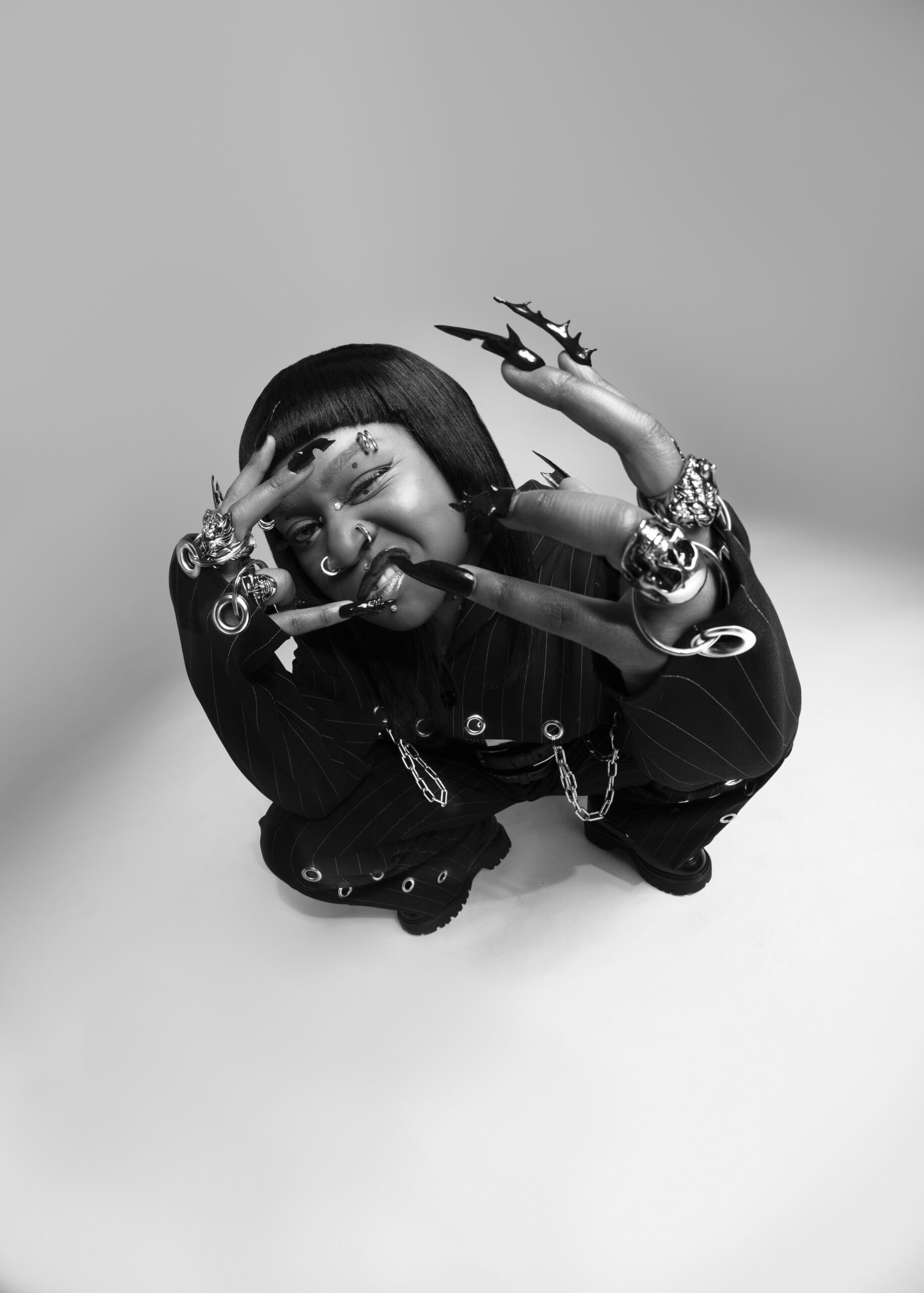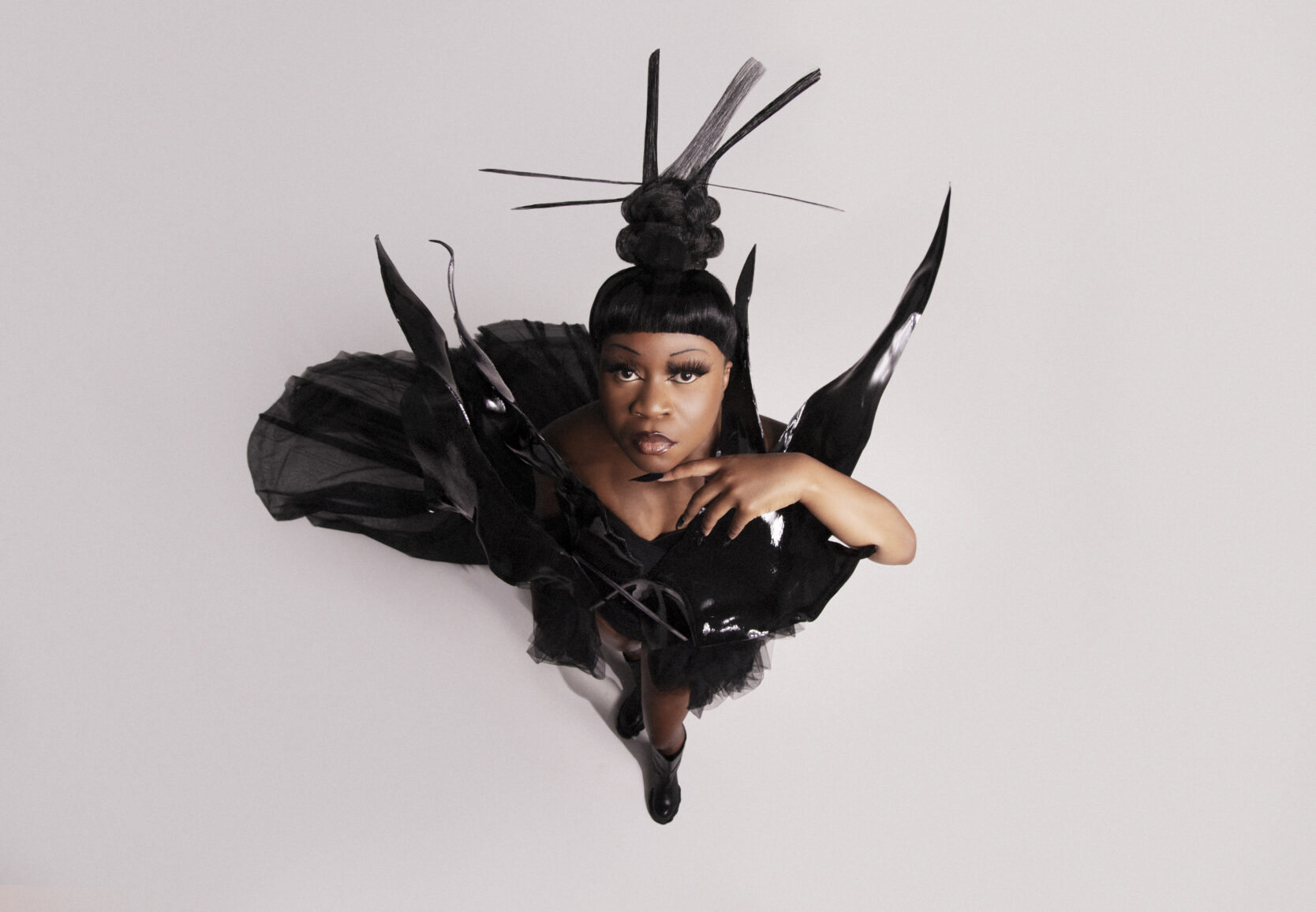While studying at San Francisco’s Academy of Art University, Sampa the Great encountered an “intense culture shock” — one that nearly stopped a journey of self-exploration and expression of her African culture.
“Being visited with the actual reality of how the world works and how the world sees me as a young African girl, that experience was huge enough for me to actually stop expressing myself,” she says of this time period, which contributed to a two-year lull in writing.
But that time in America was eye-opening for the now-29-year-old, helping her become one of contemporary rap’s most valued voices, thanks to her fearlessness and unparalleled ability to describe the world around her.
Growing up in an artistic family, the Zambian-born, Botswana-raised Sampa Tembo started taking piano and singing lessons around age nine. During this time, she started journaling and poetry, sparking an affinity for songwriting. The young Sampa found the “catharsis” of “being heard” as the middle of five children, and, later, writing provided her with the ability “to document [her] existence.”
“[My ‘why’ as a writer] is to exist and to feel,” she tells SPIN over Zoom, brushing her brassy red side bang away from her eye with a grin. Despite it being nearly 8 p.m. her time when she calls from Lusaka, Zambia, she’s vivacious while discussing her writing process: “It’s a very therapeutic experience that also allows yourself to see you through a bird’s eye view versus [through] tunnel vision, which is usually how we go through life as human beings.”
Sampa’s early appreciation for hip-hop, especially acts like 2Pac and Lauryn Hill, helped her realize the connection between poetry and music. In around 2013, after her time studying in California, Sampa moved to Australia to pursue an audio engineering degree and start working on her music career, unbeknownst to her parents. Her first project, 2015’s The Great Mixtape, introduced her sharp fusion of political, social, and spiritual themes, amplified by African, hip-hop, and neo-soul-inspired sonics.
As her fan base expanded, so did her music, from the reflective approach of 2017’s Birds and the BEE9 mixtape to her eclectic debut LP, 2019’s The Return. She collected four ARIA Awards between 2019 and 2020 both for her album, her empowering single “Final Form,” and her overall artistry. She also, crucially, performed as the opening act for musicians like Hiatus Kaiyote, Little Simz, and Kendrick Lamar on her come-up.
“I remember doing the sound check [for Kendrick’s Auckland City Limits show in 2016] and his setlist was on the ground,” Sampa says. “It got me thinking [that] I really should take this thing seriously, because I’m here at a point where I have the opportunity to express myself musically and be an artist for an artist who I’m inspired by. That’s when I was like, ‘Yeah, I’m gonna be an artist.’”
Sampa The Great’s second album, As Above, So Below, represents her power as an African woman. Birthed after a return home to Zambia during the early days of the pandemic, the project explores Sampa’s inner thoughts (“I can be hard, I can be soft, I can be anything under the stars,” she affirms on the confidence-boosting intro “Shadows”) and her most prideful moments yet (“I think [giving a fuck] is beneath me now, I ain’t even trippin’ no more, no more, no more,” she raps and sings with conviction on the energetic “IDGAF,” which features British-Ghanian artist Kojey Radical.)
“It’s been a very important journey back home,” Sampa says of her time in Zambia. “Just being able to come back to the place that inspired me, [journeying] back to why I started being an artist in the first place, connecting with my younger self who wanted to express herself.”
Sampa says As Above, So Below offers a “lighter air” than her previous projects, the result of “shedding away” the need to prove who she is: “[The album is] more of the focus on why I’m making music and why I love expressing myself through music, versus defending [why I’m] making music and defending who I am.”

Her aplomb on wax takes the form of an alter-ego, Eve, who allows her to “be the woman that [she’s] always wanted to be,” remaining steadfast in a field she was apprehensive to join as an African woman. “A woman who raps is not even in the conversation when it comes to what people expect from African women,” she notes. “It feels like I’m breaking a stereotype and changing the direction of what we define as what an African woman ‘does’—and I’m tying that to the first woman, scientifically, being Eve.”
Throughout the album, Sampa pays homage to the music and cultural influence of the African diaspora — a “full-circle moment.” Zamrock, a Zambian-created fusion of African music with psychedelic rock and funk, percolates throughout the affirming “Can I Live.” Global icon The evocative vocals of Angeliqué Kidjo, who “paved the way for African artists,” punctuate the introspective finale “Let Me Be Great.” Zambian musicians Mag44, Sam Nyambe, Sammy Masta, and Solomon Plate are credited alongside Sampa as producers. “These are artists who I saw growing up, who [expressed] themselves musically and inspired me to push our culture and our country forward,” she continues.
This quest for personal liberation has not been easy for Sampa — her stage name, she notes, serves as more of a lifelong goal rather than a braggadocious moniker. But all of these instances have shaped her style, sound, and spirit.
“For me, [being ‘the great’] is this goal to attain, to be the greatest version of myself,” she says. “It was more about ‘I’m going to be the biggest version of myself, and that will be the sum of the great versus me,’ especially at that time. I felt the opposite of that when ‘Sampa the Great’ was created.”
“The thing that I don’t sort of give myself a small pat on the back for is the courage that it took to create these projects,” she adds. “They represent something bigger than me, and I was loud and bold in that representation. I’ve enjoyed the process of the journey instead of focusing on the destination.”




